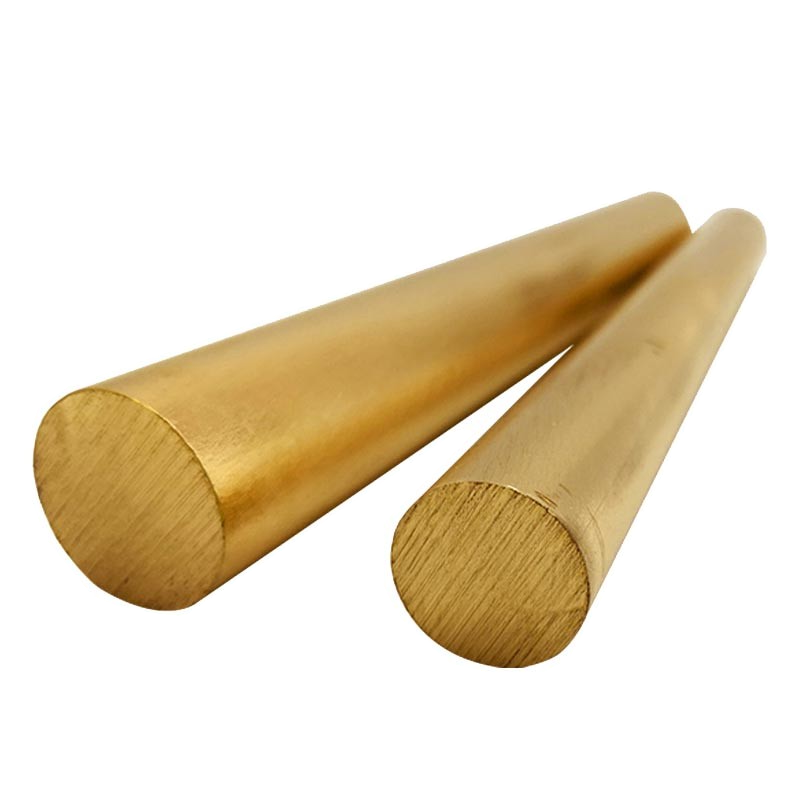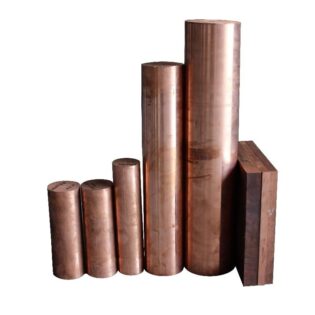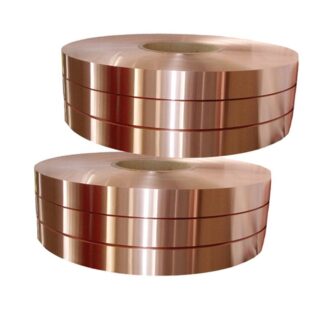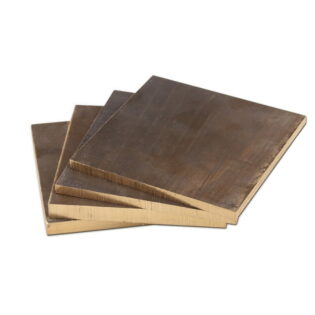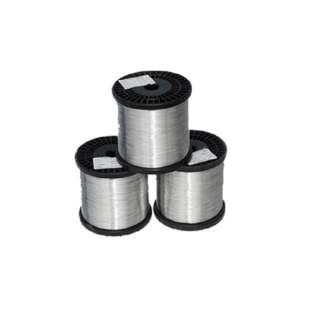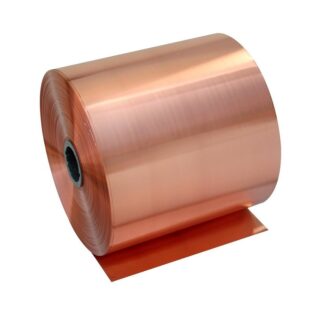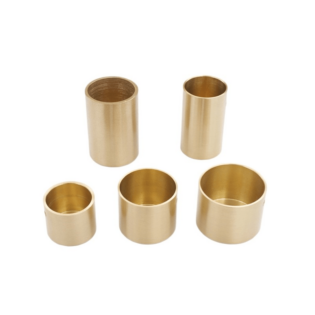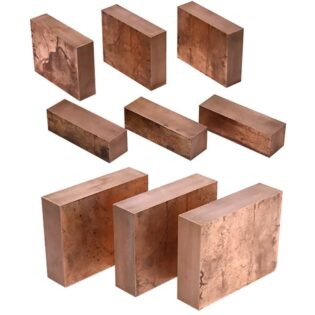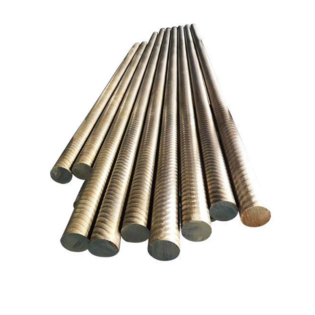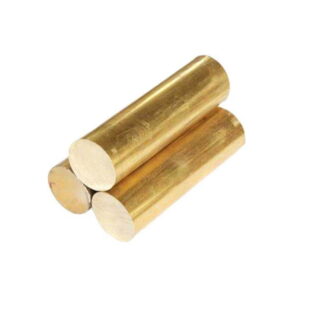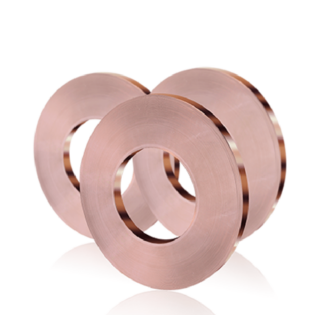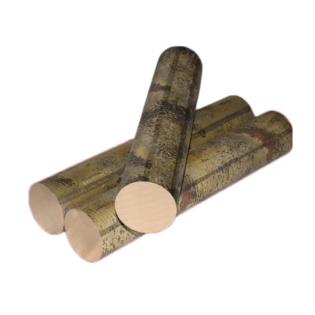C36000 Beschreibung
C36000 Free Schneideshune ist eine hochleistungsfähige Kupfer-Zink-Legierung, die speziell für die überlegene Bearbeitbarkeit entwickelt wurde. Diese Legierung enthält 2,5-3,0% Blei für verstärkte Schneideigenschaften und bietet außergewöhnliche Chipkontrolle, eine erweiterte Werkzeuglebensdauer und überlegene Oberflächenoberflächen. Mit einer Bearbeitbarkeit von 100% (Branchenstandard) ermöglicht C36000 die Hochgeschwindigkeitsproduktion von Präzisionskomponenten, wobei hervorragende mechanische Eigenschaften und eine gute Korrosionsbeständigkeit beibehalten werden.
Schnelle Spezifikationen
C36000 kostenloses Schneidenmessing - Technisches Produkt Einführung
Produktübersicht
C36000 Free Cutting Messing, auch als Alloy 360 oder Free Messing Messing bekannt, ist eine speziell für die außergewöhnliche Bearbeitbarkeit entwickelte Kupfer-Zink-Legierung. Diese Legierung umfasst kontrollierte Mengen von Blei, um die Schnitteigenschaften erheblich zu verbessern, wodurch sie zum Branchenstandard für Hochgeschwindigkeitsbearbeitungsbetriebe und die Herstellung von Präzisionskomponenten.
Wichtige technische Funktionen
| Feature | CrMo | Technischer Vorteil |
|---|---|---|
| Bearbeitbarkeitsbewertung | 100% (Branchenstandard) | Schnellste Schneidgeschwindigkeiten, beste Chipsteuerung |
| Leitinhalte | 2,5-3,0% | Optimales Chipbruch und Werkzeugschmiermittel |
| Oberflächenfinish -Fähigkeit | RA 0,4-0,8 μm | Minimale sekundäre Finishing erforderlich |
| Wärmeleitfähigkeit | 115 W/m · k | Ausgezeichnete Wärmeabteilung während der Bearbeitung |
| Elektrische Leitfähigkeit | 26% IACs | Geeignet für elektrische Anwendungen |
| Korrosionsbeständigkeit | Gut unter atmosphärischen Bedingungen | Langfristige Haltbarkeit in den meisten Umgebungen |
Chemische Zusammensetzung
Standardchemische Zusammensetzung (ASTM B16)
| nach Extrusionsabschrecken und künstlicher Alterung HBS≥80 | Inhalt (%) | Funktion | Typische Analyse |
|---|---|---|---|
| Kupfer | 60.0-63.0 | Grundmetall für Festigkeit und Leitfähigkeit | 61.5 |
| Zink (Zn) | Rest | Kraftverbesserung und Kostenoptimierung | 35.5 |
| Blei (Pb) | 2.5-3.0 | Verbesserung der Bearbeitbarkeit und Chipsteuerung | 2.8 |
| Eisen (Fe) | ≤0,35 | Kontrollierte Unreinheit | 0.fünfzehn |
| Nickel (Ni) | 0,5 | Kleines Legierungselement | 0.25 |
| Aluminium (Al) | ≤0,05 | Desoxidisator | 0.02 |
| Andere Elemente | ≤ 0,5 Gesamt | Kontrollierte Verunreinigungen | – |
Kompositionsvergleich mit verwandten Legierungen
| Legierung | Cu (%) | Zn (%) | PB (%) | Hauptmerkmal |
|---|---|---|---|---|
| C36000 | 60.0-63.0 | Rem | 2.5-3.0 | Ausgezeichnete Verwirklichung |
| C26000 | 68.5-71.5 | Rem | – | Hohe Duktilität |
| C38500 | 56.0-59.0 | Rem | 2,5-3,5 | Architekturanwendungen |
| C46400 | 59.0-62.0 | Rem | – | Marine -Messing |
| C35300 | 60.0-63.0 | Rem | 1,5-2.5 | Mittlerer Bleigehalt |
Mechanische Eigenschaften
Mechanische Eigenschaften nach Temperaturzustand
| Temperaturbezeichnung | Zugfestigkeit (MPa) | Streckgrenze (MPa) | Dehnung (%) | Härte (RB) | Verringerung der Fläche (%) |
|---|---|---|---|---|---|
| O61 (geglüht) | 338-380 | 124-140 | 45-53 | 50-60 | 55-65 |
| H01 (1/4 hart) | 370-415 | 140-310 | 25-35 | 62-75 | 45-55 |
| H02 (1/2 hart) | 415-450 | 165-345 | 20-30 | 75-85 | 35-45 |
| H04 (Voll hart) | 450-485 | 180-380 | 15-25 | 80-90 | 25-35 |
Müdigkeit und Impacteigenschaften
| Eigentum | Wert | Testbedingung | Standard |
|---|---|---|---|
| Ermüdungsfestigkeit | 140-160 MPa | 10⁸ Zyklen, rotierender Strahl | ASTM D7791 |
| Schlagfestigkeit | 35-45 j | Charpy V-Notch, Raumtemperatur | ASTM E23 |
| Frakturschärfe | 45-55 MPA√m | Ebenenstammbedingungen | ASTM E399 |
| Ausdauergrenze | 130-150 MPA | Vollständig umgekehrte Belastung | ASTM D7791 |
Physikalische Eigenschaften
Thermische und elektrische Eigenschaften
| Eigentum | Wert | Einheit | Temperatur (°C) | Testmethode |
|---|---|---|---|---|
| Dichte | 8.49 | g/cm³ | 20 | ASTM B311 |
| Schmelzpunkt (Solidus) | 885 | °C | – | DSC-Analyse |
| Schmelzpunkt (Flüssigkeit) | 900 | °C | – | DSC-Analyse |
| Wärmeleitfähigkeit | 115 | W/m·K | 20 | ASTM E1461 |
| Wärmeleitfähigkeit | 125 | W/m·K | 100 | ASTM E1461 |
| Elektrische Leitfähigkeit | 26 | % IACs | 20 | ASTM B193 |
| Elektrischer widerstand | 0.066 | Beschreibung des O2-Kaltarbeitsstahls | 20 | ASTM B193 |
Wärmeausdehnung und Moduleigenschaften
| Eigentum | Wert | Einheit | Temperaturbereich | Standard |
|---|---|---|---|---|
| Linearer Expansionskoeffizient | 20.5 | μm/m · ° C | 20-100°C | ASTM E831 |
| Linearer Expansionskoeffizient | 21.0 | μm/m · ° C | 20-200°C | ASTM E831 |
| Elastizitätsmodul | 97 | GPa | 20 Grad | ASTM E111 |
| Schermodul | 37 | GPa | 20 Grad | ASTM E143 |
| Poisson-Zahl | 0.34 | – | 20 Grad | ASTM E132 |
| Spezifische Wärmekapazität | 377 | J/kg · k | 20 Grad | ASTM E1269 |
Maschinenbearbeitungsmerkmale
Optimale Bearbeitungsparameter
| Betrieb | Geschwindigkeit (m/min) | Futterrate (mm/rev) | Schnitttiefe (MM) | Werkzeuggeometrie | Oberflächenfinish (RA μm) |
|---|---|---|---|---|---|
| Drehen - Schruppen | 150-300 | 00,25-0,50 | 2,0-5,0 | CNMG, DNMG | 1.6-3.2 |
| Drehen - Finishing | 200-400 | 0.05-0.20 | 0.5-2.0 | CNMG, VCMT | 00,4-0,8 |
| Gesichtsfräsen | 100-200 | 0.10-0.30 | 1.0-3.0 | Gesichtsmühle Einsatz | 0.8-1.6 |
| Ende Mahlen | 80-150 | 0.08-0.20 | 1,0-2,0 | Carbide End Mill | 0.8-1.6 |
| Bohren (HSS) | 30-60 | 0.10-0.30 | – | 118 ° Punktwinkel | 1.6-3.2 |
| Bohren (Carbid) | 60-120 | 00,15-0,35 | – | 130 ° Punktwinkel | 1.6-3.2 |
| Reihenfolge | 15-30 | 00,20-0,50 | 0.1-0.3 | Gerade Flöte | 00,4-0,8 |
| Fäden | 20-40 | Pitch abhängig | – | 60 ° Fadenwerkzeug | 1.6-3.2 |
Werkzeugleben und Bearbeitungsleistung
| Schneidwerkzeugmaterial | Relativer Werkzeugleben | Empfohlene Anwendung | Schneidgeschwindigkeitsbereich |
|---|---|---|---|
| Hochgeschwindigkeitsstahl (HSS) | 100% (Grundlinie) | Allgemeine Bearbeitung, Bohrung, Klopfen | 30-100 m/ich |
| Unbeschichteter Carbid | 200-300% | Hochgeschwindigkeitsumdrehen, Fräsen | 100-300 m/ich |
| Zinnbeschichtete Carbid | 300-400% | Erweiterte Werkzeuglebensanwendungen | 150-400 m/ich |
| TIALN Beschichtetes Carbid | 350-450% | Hochgeschwindigkeitsabschluss | 200-500 m/ich |
| CBN (Kubikbor -Nitrid) | 500-800% | Ultrahohespeed-Bearbeitung | 300-800 m/ich |
Chipbildung und Kontrolle
| Bearbeitungsvorgang | Chip -Typ | Chip -Steuerung | Empfohlene Pause | Werkzeugverschleißmuster |
|---|---|---|---|---|
| Drehen | Kurze, kaputte Chips | Exzellent | Chip Breaker Geometrie | Einheitliche Flankenverschleiß |
| Mahlen | Kleine Segmente | Sehr gut | Positiver Rechenwinkel | Eckverschleiß |
| Bohren | Bandchips | Gut | Richtige Punktgeometrie | Flankenkleidung am Rand |
| Fäden | Feine Chips | Exzellent | Scharfe Schneiden | Minimaler Verschleiß |
Anwendungen und Verwendungen
Primäre Anwendungskategorien
| Industriesektor | Komponentenbeispiele | Leistungsanforderungen | Materielle Vorteile |
|---|---|---|---|
| Automobil | Kraftstoffsystemanpassungen, Bremsleitungsanpassungen, elektrische Klemmen | Präzision, Druckresistenz, Korrosionsbeständigkeit | Einfache Bearbeitung, enge Toleranzen erreichbar |
| Elektrik/Elektronik | Anschlüsse, Klemmen, Schalterkomponenten, Erdungsschrauben | Elektrische Leitfähigkeit, Präzision, Zuverlässigkeit | Gute Leitfähigkeit, hervorragende maßgas |
| Sanitär/HLK | Rohrbeschläge, Ventilkomponenten, Komprimierungsanpassungen | Druckbewertung, Korrosionsbeständigkeit, Zuverlässigkeit | Kostengünstige, gute Versiegelungseigenschaften |
| Industrielle Maschinen | Zahnräder, Buchsen, Lager, mechanische Befestigungselemente | Verschleißfestigkeit, dimensionale Stabilität, Festigkeit | Selbstglubrizierende Leadinhalte |
| Marine-Hardware | Nichtkritische Befestigungselemente, dekorative Hardware | Korrosionsbeständigkeit in Süßwasserumgebungen | Gute atmosphärische Korrosionsbeständigkeit |
| Musikinstrumente | Ventilbaugruppen, Objektträger, mechanische Komponenten | Reibungsloser Betrieb, Präzision, Haltbarkeit | Ausgezeichnete Oberflächen -Finish -Fähigkeit |
Spezifische Komponentenanwendungen
| Komponententyp | Typischer Größenbereich | Kritische Anforderungen | Herstellungsprozess |
|---|---|---|---|
| NPT -Fadenarmaturen | 1/8 "bis 4" Rohrgröße | Gewindegenauigkeit, Druckdichtung | CNC -Drehung, Fadenschneidung |
| Elektrische Terminals | 2 mm bis 50 mm Breite | Leitfähigkeit, Crimp -Retention | Stempeln, CNC -Bearbeitung |
| Ventilkörper | 1/4 "bis 6" Portgröße | Druckbewertung, lecksicher | CNC -Bearbeitung, Bohren |
| Zahnradkomponenten | 10 mm bis 300 mm Durchmesser | Zahngenauigkeit, Verschleißfestigkeit | Zahnradschnitt, Wärmebehandlung |
| Buchsen/Lager | 5 mm bis 150 mm Bohrung | Dimensionale Genauigkeit, Oberflächenfinish | Drehen, langweilig, aufstrahlen |
| Benutzerdefinierte Anschlüsse | Anwendungsspezifisch | Elektrische Eigenschaften, Anpassungstoleranzen | Multi-Achsen-CNC-Bearbeitung |
Leistung in Serviceumgebungen
| Umfeld | Korrosionsbeständigkeit | Temperaturgrenze | Eignungsbewertung | Einschränkungen |
|---|---|---|---|---|
| Innenatmosphäre | Exzellent | -40 ° C bis +200 ° C. | Exzellent | Keiner signifikant |
| Outdoor -Atmosphäre | Gut | -40 ° C bis +150 ° C. | Gut | Regelmäßige Wartung empfohlen |
| Süßwasser | Gut | 0° C bis +80 ° C. | Gut | Vermeiden Sie stagnierende Bedingungen |
| Marine (Meerwasser) | Arm | N / A | Nicht empfohlen | Verwenden Sie stattdessen Naval Messing |
| Industriechemikalien | Variable | Hängt von Chemikalie ab | Fall-für-Fall-Bewertung | Chemische Kompatibilitätstests erforderlich |
| Hohe Temperatur | Gut | Bis zu 200 ° C kontinuierlich | Gut | Oxidationsresistenz akzeptabel |
Verfügbare Produktformulare
Standardproduktformen und -abmessungen
| Produkt Form | Größenbereich | Standardlängen | Toleranzklasse | Oberflächenzustand |
|---|---|---|---|---|
| Rundstab | 3 mm - 350 mm Durchmesser | 1m, 2m, 3m, 4m, 6m | H9, H11 (ISO 286) | Hell gezogener, zentraler Boden |
| Hexagonale Bar | 5 mm - 150 mm über Wohnungen | 1m, 2m, 3m, 4m | ± 0,13 mm | Hell gezogen |
| Vierkant | 5 mm - 100 mm Quadrat | 1m, 2m, 3m, 4m | ± 0,13 mm | Hell gezogen |
| Rechteckige Balken | 3-60 mm × 10-200 mm | 1m, 2m, 3m, 4m | ± 0,15 mm | Kalt gezeichnet, Mühle Finish |
| Hohlstange (Röhre) | 10-300 mm OD, 2-250 mm Wand | 1m, 2m, 3m, 6m | ± 0,20 mm | Wie gezeichnet, hell |
| Kabel | 00,5 mm - 15 mm Durchmesser | Spulen oder Schnittlängen | ± 0,05 mm | Hell gezogen |
Dimensionstoleranzen und Oberflächenbeschaffung
| Durchmesserbereich (mm) | Standardtoleranz (MM) | Präzisionstoleranz (MM) | Oberflächenrauheit (ra μm) | Geradheitstoleranz |
|---|---|---|---|---|
| 3-6 | ± 0,05 | ±0,02 | 00,4-0,8 | 0.5 mm/m |
| 6-10 | ± 0,08 | ± 0,03 | 00,4-0,8 | 0.5 mm/m |
| 10-18 | ± 0,10 | ± 0,04 | 0.6-1.0 | 0.3mm/m |
| 18-30 | ± 0,13 | ± 0,05 | 0.8-1.2 | 0.3mm/m |
| 30-50 | ± 0,16 | ± 0,06 | 0.8-1.6 | 0.2mm/m |
| 50-80 | ± 0,19 | ± 0,08 | 1.0-1.6 | 0.2mm/m |
| 80-120 | ± 0,22 | ± 0,10 | 1,2-2,0 | 0.15 mm/m |
| 120-200 | ± 0,25 | ± 0,12 | 1.6-2.5 | 0.15 mm/m |
Standards und Spezifikationen
Internationale Standards Compliance
| Standard | Vollständige Bezeichnung | Geografischer Bereich | Spezifikationsabdeckung |
|---|---|---|---|
| ASTM B16/B16M | Frei schneidende Messingstange, Bar und Formen | Nordamerika | Chemische Zusammensetzung, mechanische Eigenschaften, Abmessungen |
| 12164 | Kupfer- und Kupferlegierungen - Stab für Bearbeitungszwecke | Europa | Herstellungsanforderungen, Toleranzen, Tests |
| ER H3250 | Kupfer- und Kupferlegierungsstangen und Stangen | Japan | Chemische Zusammensetzung, mechanische Eigenschaften, Inspektion |
| ISO 426-2 | Kupfer-Zinc-Legierungen-chemische Zusammensetzung und Formen | International | Bezeichnungssystem, chemische Grenzen |
| BS EN 12163 | Kupfer- und Kupferlegierungen - Stab für allgemeine Zwecke | Vereinigtes Königreich | Allgemeine Spezifikationen, Qualitätsanforderungen |
| Ab 17660 | Kupfer-Zink-Legierungen-chemische Zusammensetzung und mechanische Eigenschaften | Deutschland | Materialspezifikationen, Testmethoden |
Chemische Zusammensetzungsgrenzen nach Standard
| Standard | Cu (%) | Zn (%) | PB (%) | Fe (%) | Andere Elemente |
|---|---|---|---|---|---|
| ASTM B16 | 60.0-63.0 | Rest | 2.5-3.0 | ≤0,35 | Ni ≤ 0,5%, andere ≤ 0,5% Gesamtgebiet |
| 12164 | 60.0-63.0 | Rest | 2.5-3.0 | ≤0,35 | Ni ≤ 0,5�i ≤ 0,05% |
| ER H3250 | 60.0-63.0 | Rest | 2.5-3.0 | ≤0,35 | Ähnlich wie ASTM |
| ISO 426-2 | 60.0-63.0 | Rest | 2.5-3.0 | ≤0,35 | Harmonisiert mit en |
Mechanische Eigentumsanforderungen nach Standard
| Standard | Zugfestigkeit (MPa) | Streckgrenze (MPa) | Dehnung (%) | Härte |
|---|---|---|---|---|
| ASTM B16 (O61) | 338-380 | 124 min | 15 min | 50-70 RB |
| ASTM B16 (H02) | 415-485 | 275 Min | 8 min | 75-90 RB |
| EN 12164 (m) | 340-430 | 140 min | 15 min | 60-85 Hb |
| JIS H3250 (O) | 340-390 | 130 min | 15 min | 60-80 Hb |
Wärmebehandlung und Verarbeitung
Wärmebehandlungspezifikationen
| Behandlungstyp | Temperaturbereich (°C) | Zeit bei Temperatur | Kühlmethode | Resultierende Eigenschaften |
|---|---|---|---|---|
| Glühen (O61) | 425-650 | 1-4 Stunden | Luftkühle | Weiche, maximale Duktilität |
| Entspannung | 200-300 | 1-2 Stunden | Luftkühle | Reduzierter innerer Stress |
| Lösungsbehandlung | 700-750 | 1 Stunde | Wasserlöschen | Homogene Struktur |
| Prozessglühen | 300-400 | 30-60 Minuten | Luftkühle | Teilweise Erweichen |
Verarbeitungseigenschaften
| Verfahren | Formbarkeitsbewertung | Temperaturanforderungen | Besondere Überlegungen |
|---|---|---|---|
| Kaltumformung | Gut | Raumtemperatur | Arbeitenverhärtung treten auf |
| Heißes Arbeiten | Exzellent | 600-750 ° C. | Beste Formbarkeit, Überhitzung vermeiden |
| Schweißen | Gerecht | Verschieden | Leitverdampfungsbedenken, Belüftung erforderlich |
| Hartlöten | Gut | 600-850 ° C. | Kompatibel mit den meisten Lötlegierungen |
| Löten | Exzellent | 180-250 ° C. | Leicht zu löten, gute gemeinsame Stärke |
Qualitätskontrolle und Tests
Standard -Testmethoden
| Eigentum | Testmethode | Probengröße | Frequenz | Akzeptanzkriterien |
|---|---|---|---|---|
| Chemische Zusammensetzung | XRF -Spektroskopie (ASTM E1086) | 3 Stücke pro Hitze | Jede Hitze | Innerhalb der Spezifikationsgrenzen |
| Zugeigenschaften | Zugtest (ASTM E8) | 2 Exemplare pro Los | Pro Produktionsgrundstück | Standardanforderungen erfüllen |
| Härte | Rockwell B (ASTM E18) | 3 Messwerte pro Stück | Statistische Stichproben | Innerhalb des angegebenen Bereichs |
| Dimensionsgenauigkeit | Koordinatenmessung (ASTM E1) | 100% oder Probenahme | Kontinuierlich | Innerhalb von Toleranz |
| Oberflächenqualität | Sehbehandlung (ASTM B250) | 100 % | Kontinuierlich | Keine Mängel |
| Mikrostruktur | Metallographie (ASTM E3) | 1 pro Produktionslauf | Wöchentlich | Einheitliche α+β -Struktur |
Defektklassifizierung und Grenzen
| Fehlertyp | Klasse A (kritisch) | Klasse B (Major) | Klasse C (Moll) | Erkennungsmethode |
|---|---|---|---|---|
| Chemische Zusammensetzung | Aus der Spezifikation | Nahe Grenzen | – | Spektroskopische Analyse |
| Dimensionale Variation | >2× tolerance | >1.5× tolerance | >tolerance | Dimensionsmessung |
| Oberflächenfehler | Risse, tiefe Kratzer | Flache Kratzer | Lichtspuren | Visuelle Inspektion |
| Härteabweichung | >±10 points | >±5 points | Innerhalb von ± 5 Punkten | Härteprüfung |
| Interne Mängel | Hohlräume, Einschlüsse | Geringfügige Porosität | – | Ultraschallprüfung |
Umwelt- und Sicherheitsaspekte
Materialsicherungsinformationen
| Gefahrkategorie | Risikoniveau | Hauptanliegen | Sicherheitsmaßnahmen |
|---|---|---|---|
| Leitinhalte | Mäßig | Aufnahme, Einatmen von Staub/Dämpfen | Verwenden Sie die Belüftung, vermeiden Sie die Bearbeitung von Staubeinatmen |
| Bearbeitungsvorgänge | Niedrig | Metallstauberstellung | Standardmaschinenwerkstattpraktiken |
| Schweißen/Löschen | Mäßig | Lead -Raucherzeugung | Angemessene Belüftung, Atemschutzschutz |
| Brandgefahr | Sehr niedrig | Nicht kombiniertes Metall | Standard -Brandvorkehrungen |
| Umweltfreundlich | Mäßig | Lead -Inhalte erfordert eine ordnungsgemäße Entsorgung | Befolgen Sie die lokalen Vorschriften für Metallabfälle |
Recycling und Entsorgung
| Aspekt | Erfordernis | Compliance -Methode |
|---|---|---|
| Materialidentifikation | Leitende Inhaltserklärung | Materialzertifizierungsdokumentation |
| Schrottsegregation | Separate Blei -Messingkollektion | Ausgewiesene Schrottbehälter |
| Recyclingprozess | Speziales Messingrecycling | Zertifizierte Metallrecycler |
| Abfallentsorgung | Klassifizierung gefährlicher Abfälle | Lizenzierte Abfallentsorgungsdienste |
| Dokumentation | Sorgerechtskette | Materialverfolgungssysteme |
Diese technische Spezifikation enthält umfassende Informationen zu C36000 kostenloses Schneiden von Messing für Engineering- und Fertigungsanwendungen.

